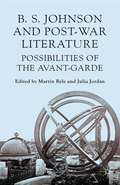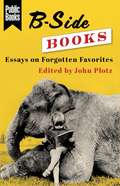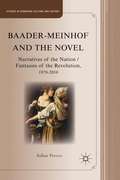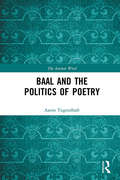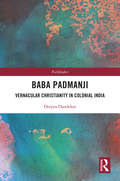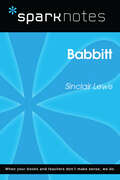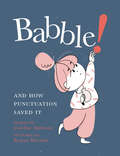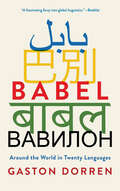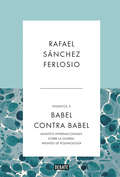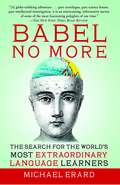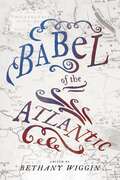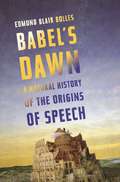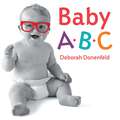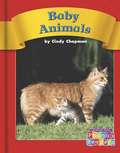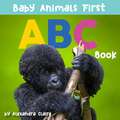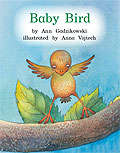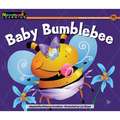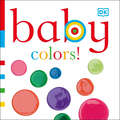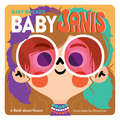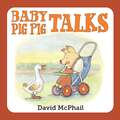- Table View
- List View
B S Johnson and Post-War Literature: Possibilities of the Avant-Garde
by M. Ryle J. JordanA collection of essays on the 1960s experimental writer B.S. Johnson, this book draws together new research on all aspects of his work, and, in tracing his connections to a wider circle of continental, British and American avant-garde writers, offers exciting new approaches to reading 1960s experimental fiction.
B-Side Books: Essays on Forgotten Favorites (Public Books Series)
by Edited by John PlotzThere are the acknowledged classics of world literature: the canonical works assigned in schools, topping every must-read list . . . and then there are the B-Sides. These are the books that slipped through the cracks, went unread, missed their rightful appointment with posterity. They were ahead of their times or behind their times or on a whole different schedule than the rest of the universe.What do you do when a book that you love has been neglected or dismissed by everyone else? In B-Side Books, leading writers, critics, and scholars show why their favorite forgotten books deserve a new audience. From dusty westerns and far-out science fiction to obscure Czech novelists and romance-novel precursors, the contributors advocate for the unsung virtues of overlooked books. They write about unheralded novels, poetry collections, memoirs, and more with understanding, respect, passion, and love.In these thoughtful, often personal essays, contributors—including Stephanie Burt, Caleb Crain, Merve Emre, Ursula K. Le Guin, Carlo Rotella, and Namwali Serpell—read books by writers such as Helen DeWitt, Shirley Jackson, Stanislaw Lem, Dambudzo Marechera, Paule Marshall, and Charles Portis.
Baader-Meinhof and the Novel
by Julian PreeceThe Baader-Meinhof Group and other violent underground organizations have provided material to many novels by leading German and international writers. This book is the first to examine this rich literary corpus, treating it as a political unconscious which expresses submerged anxieties and moral blind-spots in Europe's most powerful country.
Baal and the Politics of Poetry (The Ancient Word)
by Aaron TugendhaftBaal and the Politics of Poetry provides a thoroughly new interpretation of the Ugaritic Baal Cycle that simultaneously inaugurates an innovative approach to studying ancient Near Eastern literature within the political context of its production. The book argues that the poem, written in the last decades of the Bronze Age, takes aim at the reigning political-theological norms of its day and uses the depiction of a divine world to educate its audience about the nature of human politics. By attuning ourselves to the specific historical context of this one poem, we can develop more nuanced appreciation of how poetry, politics, and religion have interacted—in antiquity, and beyond.
Baba Padmanji: Vernacular Christianity in Colonial India (Pathfinders)
by Deepra DandekarThis book is a critical biography of Baba Padmanji (1831-1906), a firebrand native Christian missionary, ideologue, and litterateur from 19th-century Bombay Presidency. Though Padmanji was well-known, and a very influential figure among Christian converts, his contributions have received inadequate attention from the perspective of ‘social reform’ — an intellectual domain dominated by offshoots of the Brahmo Samaj movement, like the Prarthana Samaj in Bombay. This book constitutes an in-depth analysis of Padmanji’s relationships with questions of reform, education, modernity, feminism, and religion, that had wide-ranging repercussions on the intellectual horizon of 19th-century India. It presents Padmanji’s integrated writing persona and identity as a revolutionary pathfinder of his times who amalgamated and blended vernacular ideas of Christianity together with early feminism, modernity, and incipient nationalism. Drawing on a variety of primary and secondary sources, this unique book will be of great interest for area studies scholars (especially Maharashtra), and to researchers of modern India, engaged with the history of colonialism and missions, religion, global Christianity, South Asian intellectual history, and literature.
Babar's ABC (Babar #27)
by Laurent De BrunhoffThe publisher describes this book well: Join Babar, Celeste, Arthur, Zephir, and all the other characters of Celesteville as they take young readers on a lively romp through the alphabet. In this delightful and charming book, crocodiles chase crows, geese go through the garden gate, kittens love kisses, and pigs wear-what else?-purple pajamas!
Babbitt (SparkNotes Literature Guide Series)
by SparkNotesBabbitt (SparkNotes Literature Guide) by Sinclair Lewis Making the reading experience fun! Created by Harvard students for students everywhere, SparkNotes is a new breed of study guide: smarter, better, faster.Geared to what today's students need to know, SparkNotes provides:chapter-by-chapter analysis explanations of key themes, motifs, and symbols a review quiz and essay topicsLively and accessible, these guides are perfect for late-night studying and writing papers.
Babble!: And How Punctuation Saved It
by Caroline AddersonA village is torn apart by its residents' inability to communicate, until a little girl shares the gift of punctuation in this humorous illustrated parable.Chaos reigns in the village of Babble! All day, the residents fight, yell and argue, and no one is heard or understood . . . until a mysterious little girl arrives and gives the locals something very strange: a period. But what is this thing that looks like a freckle or a spot? The villagers don't even know how to ask. However, as the girl begins to share more gifts — a question mark, quotation marks — the residents slowly learn how to communicate. But when more fights arise and disaster strikes, can punctuation truly save the day?
Babe, the Big Hit
by Barbara W. Makar"Decodable Storybooks 2A accompany More Workbook 2 and provide additional opportunity to apply the phonetic concepts introduced in Workbook 2 to connected text. The storybooks use the same vocabulary as Workbook 2 and Storybooks 2 with the addition of one sight word was. Storybooks 2A are an excellent tool to reinforce the skills from Workbook 2 and can be used with either Workbook 2 or More Workbook 2"--Epsbooks.com.
Babel: Around the World in Twenty Languages
by Gaston Dorren“Babel is an endlessly interesting book, and you don’t have to have any linguistic training to enjoy it . . . it’s just so much fun to read.” —NPREnglish is the world language, except that 80 percent of the world doesn’t speak it. Linguist Gaston Dorren calculates that to speak fluently with half of the world’s people in their mother tongues, you’d need to know no fewer than twenty languages. In Babel, he sets out to explore these top twenty world languages, which range from the familiar (French, Spanish) to the surprising (Malay, Javanese, Bengali). Whisking readers along on a delightful journey, he traces how these languages rose to greatness while others fell away, and shows how speakers today handle the foibles of their mother tongues. Whether showcasing tongue-tying phonetics, elegant but complicated writing scripts, or mind-bending quirks of grammar, Babel vividly illustrates that mother tongues are like nations: each has its own customs and beliefs that seem as self-evident to those born into it as they are surprising to outsiders. Babel reveals why modern Turks can’t read books that are a mere 75 years old, what it means in practice for Russian and English to be relatives, and how Japanese developed separate “dialects” for men and women. Dorren also shares his experiences studying Vietnamese in Hanoi, debunks ten myths about Chinese characters, and discovers the region where Swahili became the lingua franca. Witty and utterly fascinating, Babel will change how you look at and listen to the world.“Word nerds of every strain will enjoy this wildly entertaining linguistic study.” —Publishers Weekly (starred review)
Babel contra Babel: Asuntos internacionales. Sobre la guerra. Apuntes de polemología. (Ensayos #3)
by Rafael Sánchez FerlosioBabel contra Babel, tercer volumen de la obra ensayística del mejor prosista español del siglo XX, recoge todos sus artículos de prensa sobre asuntos internacionales y sobre la guerra. Ferlosio ha pasado buena parte de las últimas cuatro décadas escrutando atentamente la actualidad política y cultural no solo española, sino también del mundo. Si en Gastos, disgustos y tiempo perdido se recogían sus artículos y ensayos dedicados a «asuntos nacionales», en este volumen se recogen sus no menos numerosos artículos sobre «asuntos internacionales» como la guerra de las Malvinas, la situación en Oriente Medio, las dos guerras de Irak, la política exterior de Estados Unidos o la del Vaticano en tiempos de Wojtila. En un caso como en otro, las diversas piezas reunidas son atravesadas por unos pocos temas recurrentes que contribuyen a amalgamarlas. En Babel contra Babel, el tema que más claramente contribuye a ello es, sin duda, el de la guerra. Más en concreto, «el actual estado de guerra permanente de la humanidad». En torno a él orbitan la mayor parte de los textos aquí recogidos, entre los que cabe destacar «Cuando la flecha está en el arco, tiene que partir», «La hija de la guerra y la madre de la patria» y, muy especialmente, «God & Gun», el último de los grandes ensayos que Ferlosio ha dedicado a una de las cuestiones centrales de su obra, imbricándola a la Historia, a la religión, y a la violencia primordial que subyace a los conceptos de patria y de identidad. Reseñas:«Todo en Rafael Sánchez Ferlosio tiene una referencia literaria y poética, trate de lo que trate.»Félix de Azúa «Entre los autores de mi generación o de las anteriores, solo me interesa Ferlosio, que es el mejor escritor español.»Juan Benet
Babel No More: The Search for the World's Most Extraordinary Language Learners
by Michael ErardA "fascinating" (The Economist) dive into the world of linguistics that is "part travelogue, part science lesson, part intellectual investigation...an entertaining, informative survey of some of the most fascinating polyglots of our time" (The New York Times Book Review).In Babel No More, Michael Erard, "a monolingual with benefits," sets out on a quest to meet language superlearners and make sense of their mental powers. On the way he uncovers the secrets of historical figures like the nineteenth-century Italian cardinal Joseph Mezzofanti, who was said to speak seventy-two languages, as well as those of living language-superlearners such as Alexander Arguelles, a modern-day polyglot who knows dozens of languages and shows Erard the tricks of the trade to give him a dark glimpse into the life of obsessive language acquisition. With his ambitious examination of what language is, where it lives in the brain, and the cultural implications of polyglots' pursuits, Erard explores the upper limits of our ability to learn and use languages and illuminates the intellectual potential in everyone. How do some people escape the curse of Babel--and what might the gods have demanded of them in return?
Babel No More
by Michael ErardWe all learn at least one language as children. But what does it take to learn six languages, twenty . . . seventy? Such feats of linguistic prowess provide a glimpse into what the human brain is capable of--and hold up a mirror to our desire to live without language barriers on a shrinking planet. In Babel No More, Michael Erard, "a monolingual with benefits," sets out on a quest to meet language superlearners and make sense of their mental powers. On the way he uncovers the secrets of historical figures like the nineteenth-century Italian cardinal Giuseppe Mezzofanti, who was said to speak seventy-two languages and was such a legend that when he died people all over Europe vied for his skull. Emil Krebs, a pugnacious fin de siècle German diplomat, spoke sixty-eight languages, and Erard sees the evidence of this in Krebs's dissected brain. Lomb Kató, a Hungarian hyperpolyglot who taught herself Russian by reading Russian romance novels, believed that "one learns grammar from language, not language from grammar." These massive multilinguals have long offered a natural experiment into the limits of the brain; here, at last, we can inspect the results. On his way to tracking down the one man who could be called the most linguistically talented person in the world, Erard meets other living language-superlearners. Among them is Alexander, a modern-day polyglot with dozens of languages who shows him the tricks of the trade and gives him a dark glimpse into the life of obsessive language acquisition. "I came to consider him as a holy man," writes Erard. "Others do yoga; Alexander does grammatical exercises." With his ambitious examination of what language is, where it lives in the brain, and the cultural implications of polyglots' pursuits, Erard explores the upper limits of our ability to learn and to use languages, and illuminates the intellectual potential in everyone. How do some people escape the curse of Babel--and what might the gods have demanded of them in return?
Babel of the Atlantic (Max Kade Research Institute: Germans Beyond Europe)
by Bethany WigginDespite shifting trends in the study of Oceanic Atlantic history, the colonial Atlantic world as it is described by historians today continues to be a largely English-only space; even when other language communities are examined, they, too, are considered to be monolingual and discrete. Babel of the Atlantic pushes back against this monolingual fallacy by documenting multilingualism, translation, and fluid movement across linguistic borders. Focusing on Philadelphia and surrounding areas that include Germantown, Bethlehem, and the so-called Indian country to the west, this volume demonstrates the importance of viewing inhabitants not as members of isolated language communities, whether English, German, Lenape, Mohican, or others, but as creators of a vibrant zone of mixed languages and shifting politics. Organized around four themes—religion, education, race and abolitionism, and material culture and architecture—and drawing from archives such as almanacs, newspapers, and the material world, the chapters in this volume show how polyglot, tolerant, and multilingual spaces encouraged diverse peoples to coexist. Contributors examine subjects such as the multicultural Moravian communities in colonial Pennsylvania, the Charity School movement of the 1750s, and the activities of Quaker abolitionists, showing how educational and religious movements addressed and embraced cultural and linguistic variety.Drawing Early American scholarship beyond the normative narrative of monolingualism, this volume will be invaluable to historians and sociolinguists whose work focuses on Pennsylvania and colonial, revolutionary, and antebellum America.In addition to the editor, the contributors include Craig Atwood, Patrick M. Erben, Cynthia G. Falk, Katherine Faull, Wolfgang Flügel, Katharine Gerbner, Maruice Jackson, Lisa Minardi, Jürgen Overhoff, and Birte Pfleger.
Babel of the Atlantic (Max Kade Research Institute)
by Bethany WigginDespite shifting trends in the study of Oceanic Atlantic history, the colonial Atlantic world as it is described by historians today continues to be a largely English-only space; even when other language communities are examined, they, too, are considered to be monolingual and discrete. Babel of the Atlantic pushes back against this monolingual fallacy by documenting multilingualism, translation, and fluid movement across linguistic borders. Focusing on Philadelphia and surrounding areas that include Germantown, Bethlehem, and the so-called Indian country to the west, this volume demonstrates the importance of viewing inhabitants not as members of isolated language communities, whether English, German, Lenape, Mohican, or others, but as creators of a vibrant zone of mixed languages and shifting politics. Organized around four themes—religion, education, race and abolitionism, and material culture and architecture—and drawing from archives such as almanacs, newspapers, and the material world, the chapters in this volume show how polyglot, tolerant, and multilingual spaces encouraged diverse peoples to coexist. Contributors examine subjects such as the multicultural Moravian communities in colonial Pennsylvania, the Charity School movement of the 1750s, and the activities of Quaker abolitionists, showing how educational and religious movements addressed and embraced cultural and linguistic variety.Drawing early American scholarship beyond the normative narrative of monolingualism, this volume will be invaluable to historians and sociolinguists whose work focuses on Pennsylvania and colonial, revolutionary, and antebellum America.In addition to the editor, the contributors include Craig Atwood, Patrick M. Erben, Cynthia G. Falk, Katherine Faull, Wolfgang Flügel, Katharine Gerbner, Maruice Jackson, Lisa Minardi, Jürgen Overhoff, and Birte Pfleger.
Babel's Dawn: A Natural History of the Origins of Speech
by Edmund Blair BollesBolles, an author who has a blog that also discusses language origins, uses the idea of museum galleries that display scenes and characters to illustrate the origins of speech, beginning with the last common ancestor people share with chimpanzees (about six million years ago) to the first storytellers (about 150,000 years ago). He discusses several theories of language origins and proposes that humans alone speak because of a need that is not necessary for other species. He presents an evolutionary account of speech beginning with ape communication up to the use of single words, to the use of full sentences, concepts, and metaphors. No index is provided. Annotation ©2011 Book News, Inc. , Portland, OR (booknews. com)
Baby ABC
by Deborah DonenfeldBabies love looking at other babies, and this concept book will allow them to do just that! Each page features a back-and-white photograph of a baby interacting with an object that starts with the featured letter of the alphabet. The object is in color, and coordinates with the color of the letter featured, making the connection easy and understandable for non-readers. The diverse cast of babies and recognizable object make this book the perfect introduction to the alphabet.
Baby Animals
by Cindy ChapmanPhonics Readers is a recognized leader in helping you teach phonics and phonemic awareness, within the context of content-area reading. Content area focus: Animal Families Phonics Skills: short i, c, d, w, y
Baby Animals First ABC Book (Baby Animals First Series #2)
by Alexandra ClaireFrom a scaly little alligator hatchling to a long-legged zebra foal, Baby Animals First ABC Book introduces twenty six adorable baby animals to young readers. Filled with eye-catching photos of animals in their natural surroundings paired with playful rhymes, this book will instill a love of nature while teaching the ABCs. Sized perfectly for curious little hands to hold, children will delight in learning from a wide array of creatures in the Baby Animals First series. The series expands with age, as young children will be attracted to the tactile cover and vibrant photographs, while older kids will engage with the rhyming text that teaches early learning concepts.
Baby Bird (Fountas & Pinnell LLI Green #Level G, Lesson 75)
by Ann GadzikowskiFountas and Pinnell Leveled Literacy Intervention Green System -- 1st Grade
Baby: Colors! (Chunky Baby)
by DKPerfect for reading aloud and encouraging early word recognition, this new DK series is great for babies who love to explore shapes and colors. Baby: Colors! contains a rainbow of objects, from green balloons to purple butterflies.
Baby Janis: A Book about Nouns (Baby Rocker)
by Running PressIntroduce your littlest rocker to early concepts through the creativity of Janis Joplin in this fun and entertaining book that is perfect for the next generation of music lovers. Featuring eleven spreads pairing elements of Janis Joplin with simple words, this is the book for any Janis fan, young or old. Baby Janis teaches babies and toddlers a variety of nouns (heart, baby, half moon, pearl, tattoo, guitar, etc.).
Baby Pictures (Fountas & Pinnell LLI Green #Level E, Lesson 57)
by Emma BenmanFountas and Pinnell Leveled Literacy Intervention Green System -- 1st Grade
Baby Pig Pig Talks
by David McPhailDavid McPhail takes readers back in time to when Pig Pig, star of the popular picture-book series, was a baby. Baby Pig Pig tries to copy his mother's speech as she points out the animals and objects around them, but nothing he says seems to come out right. What will Baby Pig Pig's first real word be?
